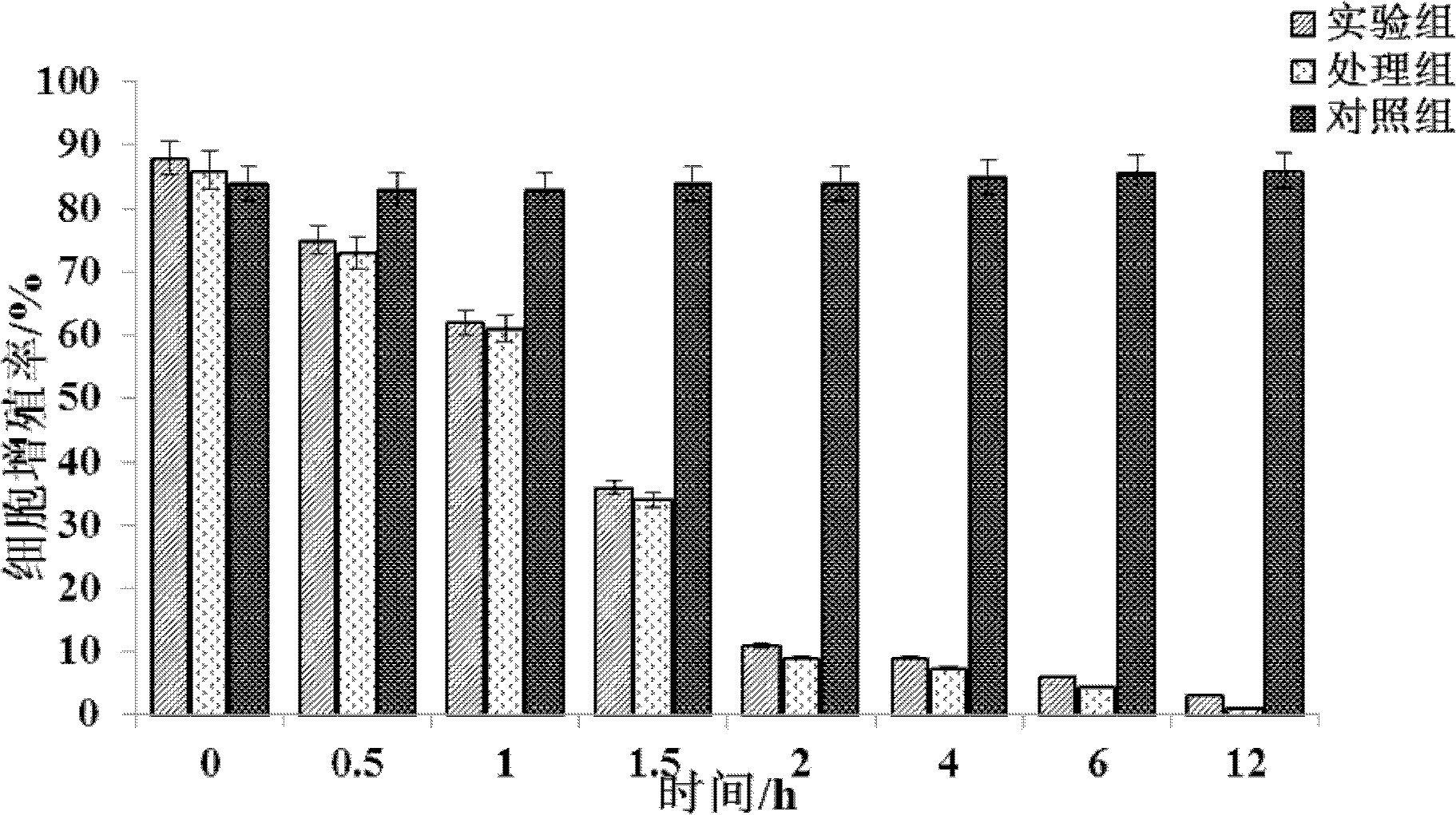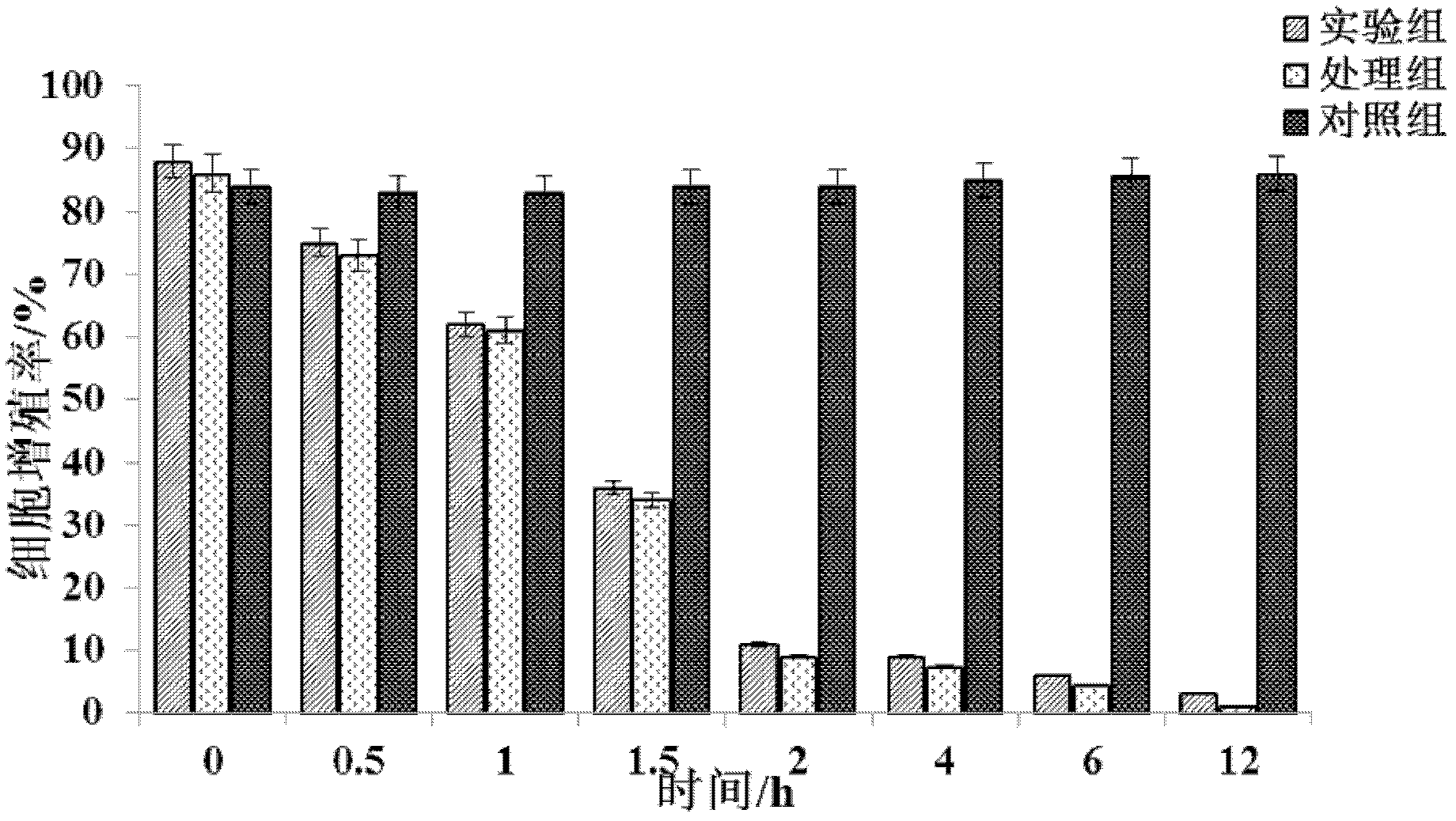Acinetobacter strain and application thereof to degradation of zearalenone
A technology of zearalenone and bacillus, which is applied in the fields of application, bacteria, animal feed, etc., can solve the problems of detoxification, etc., and achieve the effect of strong degradation ability, low cost and high efficiency of secondary pollution
- Summary
- Abstract
- Description
- Claims
- Application Information
AI Technical Summary
Problems solved by technology
Method used
Image
Examples
Embodiment 1
[0025] Isolation and identification of strain Acinetobacter sp.SM04
[0026] 1. Isolation of strain Acinetobacter sp.SM04:
[0027] Take 2.0g of soil (plow layer soil in the corn base of Dengta Basin, Heyuan City, Guangdong Province) soaked with 10mL sterile 0.15mol / L sodium chloride aqueous solution, and take 0.15mL supernatant to inoculate into 25μg / mL ZEN and 15μg / mL ZEN mL nystatin was enriched in 3mL M1 medium, and the remaining ZEN in the culture was ultrasonically extracted with an equal volume of methanol, and the residual amount of ZEN was quantitatively analyzed by HPLC-PAD.
[0028]Inoculate 0.5 mL of the culture with no residual ZEN detected into 3 mL of M2 medium (ZEN as the sole carbon source) and incubate for 48 hours, then take 100 μL of the culture and serially dilute it with sterile 0.15 mol / L sodium chloride aqueous solution, and take 100 μL The diluted solution was coated on a nutrient broth plate, placed in a constant temperature incubator at 30°C for 24 ...
Embodiment 2
[0046] Degradation test of Acinetobacter sp.SM04 on ZEN:
[0047] (1) Prepare the degradation test medium containing ZEN 25mg / L: add quantitative ZEN methanol stock solution in a sterilized plastic centrifuge tube, in N 2 After methanol was removed under the evaporator, sterilized M1 medium was added to make the final concentration of ZEN 25mg / L.
[0048] (2) Culture the Acinetobacter sp.SM04 pure bacteria of Example 1 on the M1 plate, then pick a single colony from the solid M1 plate and inoculate it into 30mL of the degradation experiment medium, and cultivate it in a water bath shaker at 30°C (200r / min). After culturing for 12 hours, use an equal volume of methanol to ultrasonically extract the residual ZEN in the culture, and use HPLC-PAD to quantitatively analyze the residual ZEN in the centrifuged supernatant. In the experiment, three parallel samples were made, and the uninoculated degradation test medium was used as control sample.
[0049] (3) Determination of the...
Embodiment 3
[0052] Degradation test of Acinetobacter sp.SM04 on ZEN:
[0053] The steps, methods and materials of this example are the same as in Example 2, except that the incubation time in step (2) is 24 hours.
[0054] Test results: After 24 hours, the concentrations of ZEN in Acinetobacter sp.SM04 culture solution were 4.82mg / L, 4.97mg / L, 5.26mg / L, and the average value was 5.02mg / L. After culturing for 24 hours, the color of the culture solution further showed a more obvious difference, from light yellow to dark yellow, while the control sample did not change significantly.
PUM
| Property | Measurement | Unit |
|---|---|---|
| Diameter | aaaaa | aaaaa |
Abstract
Description
Claims
Application Information
 Login to View More
Login to View More - R&D
- Intellectual Property
- Life Sciences
- Materials
- Tech Scout
- Unparalleled Data Quality
- Higher Quality Content
- 60% Fewer Hallucinations
Browse by: Latest US Patents, China's latest patents, Technical Efficacy Thesaurus, Application Domain, Technology Topic, Popular Technical Reports.
© 2025 PatSnap. All rights reserved.Legal|Privacy policy|Modern Slavery Act Transparency Statement|Sitemap|About US| Contact US: help@patsnap.com



